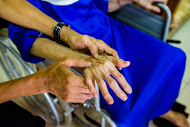
|
|
|
Editorial - Caregiver's Corner
Strength Within, Care Beyond – Staying physically strong as a caregiver
Staying physically strong as a
caregiver is of utmost importance as it directly impacts one's ability to
provide optimal care and support to your loved ones. Caregiving often involves
physically demanding tasks, such as lifting, transferring, and assisting with
daily activities. Maintaining physical strength and endurance enables
caregivers to perform these tasks with ease, reducing the risk of injury to
themselves and the person under their care. Physical strength also contributes
to better mental well-being, as it promotes confidence, resilience, and a sense
of accomplishment, which are crucial in navigating the challenges and emotional
strain that can come with the role. Ultimately, by prioritizing their physical
well-being, caregivers can ensure they are better equipped to provide the
highest level of care, maintain their own health and well-being, and sustain
their commitment to their loved ones. Here are some tips that can help:
1. Caregiver training
If you’re new to taking care of your loved ones, attend caregiver training sessions to understand the proper ergonomics of caring for your loved ones. These caregiver training sessions are designed to equip you with the necessary techniques to perform caregiving tasks safely. One of the key aspects is proper body mechanics and lifting techniques that minimize strain on your back and reduce the risk of injury. Learning how to maintain a stable base of support, use your leg muscles instead of your back when lifting, and distribute weight evenly can significantly decrease the pressure on your spine and minimize the likelihood of sustaining musculoskeletal injuries. Additionally, caregiver training sessions can provide insights into assistive devices and tools that can aid in caregiving, such as transfer belts, lifting aids, or adjustable beds, which further enhance safety and reduce physical strain.
2. Address the aches and discomforts that you have first - See a physiotherapist
Caregiving often involves repetitive motions, prolonged periods of standing or sitting, and physical exertion, which can put significant strain on your muscles and joints. Neglecting these aches and pains can lead to further discomfort, decreased mobility, and even chronic conditions. A physiotherapist specializes in assessing and treating musculoskeletal issues, offering targeted interventions to alleviate pain, restore function, and prevent further injury. They can identify the root causes of your aches, whether it's poor posture, improper body mechanics, or overuse, and can provide personalized treatment plans to address your specific needs. Physiotherapy may include manual therapies, therapeutic exercises, stretching routines, postural correction techniques, and ergonomic recommendations tailored to your caregiving tasks. Under the guidance of a physiotherapist, you gain knowledge about self-care strategies, including exercises and preventive measures, to manage and prevent future musculoskeletal issues. Taking care of your own physical well-being is essential as a caregiver to ensure you can continue providing the best care for your loved ones without compromising your own health.
3. Unlock your joy in motion - find an activity that you like!
The key is to identify an activity that brings you joy, relaxation, and a sense of rejuvenation. Some caregivers find solace in activities like meditation or yoga, others enjoy engaging in workouts such as running, swimming, or pilates, as they release endorphins and provide a natural boost to mood. Finding an enjoyable activity to destress as a caregiver is crucial to avoid burnout. Prioritizing self-care allows you to recharge, reduce stress, and maintain emotional well-being. By making time for yourself and engaging in activities that bring you joy, you can better manage caregiving challenges and sustain a healthier and more balanced caregiving journey.
4. Making it sustainable - Every effort counts!
Choosing a physical activity that you enjoy will increase the likelihood of you making it a long term habit. Ensure these activities fit into your schedule. If you find this challenging, choose specific days and times that work best for you and commit to sticking to them. Start small and gradually increase the duration and intensity over time. Find an exercise buddy that shares similar fitness goals . This will make exercise more enjoyable and help you stay accountable. You can motivate and support each other throughout the journey, making it more sustainable. Also, be flexible - There may be times where it may be difficult to stick with the routine. Instead of giving up entirely, find alternative ways to be active, such as taking the stairs instead of the elevator or doing a quick home workout. Remember, consistency is key when establishing an exercise routine.
.png)
Ms Debra Ow
Senior Physiotherapist
Altum Physio Pilates Pte Ltd
__________________________________________________________________________________________________________
Mobilising Shared Family Support in Caregiving of Older Adults
Introduction
Caregiving demands can impact the quality of family relationship which include sibling relationships and relationship between the adult children and their older parents. Have you ever wondered how is it that in some families, despite the demands in caregiving, family members are able to rally together and work things out for their loved ones while in others, the responsibilities of caregiving are seen as burden and being pushed around? Family disagreement and conflict do arise due to many reasons including differences in opinion on how the caregiving tasks should be undertaken, issues of equity as in how the tasks should be more fairly divided and the roles of individuals in managing care. While disagreement is normal in human interactions, how should family members build and maintain quality of relationships so that they can collectively play a part in shared caregiving responsibilities? This article provides insights on how the strengths of parent-child and sibling relationships can impact caregiving of older adults and shares how family members can harness the strengths of members in caregiving support.
Who is considered family?
Very often when we think of family, we tend to focus on the nuclear family; that is the parents and their children living under one roof. However, we find that the model of the nuclear family is less applicable with emerging phenomenon of divorce, remarriages, singlehood, single parenthood, and couples opting not to have or have fewer children. The familial structures in later life stage are a result of life course transitions by family members and it reflects the forms of diversity in society. The definition of family membership should hence be broadly embraced to include active participants who are children, nieces, nephews, siblings, aunt, uncle, and cousins. In some contexts, individuals consider their closest friend as “family”. In taking a broader perspective on the definition of family, we would not be too microscopic in having missed opportunity for support from someone who acts as family and not be too fixated in forcing the older adult to rely on an unreliable family member simply because he or she qualifies as closest ties (biologically or legally) in the definition of a family.
What is the state of family relations in society?
Research has shown that intergenerational ties and relationships remained strong and cohesive in societies[i]. Despite structural changes in family structures, intergenerational family relationships remain intact with evidence of frequent interaction and exchanges between parents and adult children[ii]. Family relations in the East Asian cultures embrace obligation, reciprocity and reliance and family care is much a preferred option by family members[iii]. This is because family care enables older adults to maintain social connections with their loved ones and it also preserves a sense of dignity for them.
In Singapore, the family remains a key source of support for physical, financial, and emotional support for older members. In a 2019 Social Attitudes of Singaporeans survey conducted by the Ministry of Social and Family Development, 93% of persons aged 65 years and above reported having a close-knit family[iv] demonstrating a strong sense of closeness to their family. 97% of the respondents also agreed it is important for grandparents and their grandchildren to maintain close ties with each other. This signals the importance held by the older persons on building and maintaining intergenerational ties. It is noteworthy that 96% of respondents aged 15 to 64 years old agreed that it is their duty to take care of their parents regardless of their qualities and faults; highlighting that filial responsibility remains strong in local context. The strengths of families are valuable resources to be tapped for the caregiving journey of older adults.
How does the state of parent-child relationship impact caregiving of older parents?
We can take a life course perspective to better understand how family relationships are formed and shaped over time and the impact on caregiving. The dynamic interaction between parents and children from growing up years will have a lasting impact on parent -child relationships and how future interactions are formed[v]. Adult children formed their perceptions and interpretations of the relationship through time, and this will have implications on how they construct the meaning of intergenerational reciprocity and their obligations in caregiving. When the children enjoy close relationship with their parents, they are driven by an innate desire to reciprocate their filial obligations[vi]. Conversely, when there are unresolved conflicts and distant parent-child relationships, there will be an adverse impact on perceptions of caregiving for the older parents.[vii] However, research has also alluded that adult parent-child relationships have the potential to change and adjust over time[viii]. This means that there is need to invest in building and maintaining good parent -child relationships even in situations where life events happen such as divorce. Building parent-child relationships could take simple forms such as having meals together, going for outings or celebrating special occasions.
Parents should be mindful to not get caught in having a preferred child syndrome in the parenting journey as this will have detriment effects on relationships within the family. The “preferred child” is one whom the parents dote on and treat better than other siblings. Parental favouritism can lead to conflict and unhappiness amongst siblings and negatively impact how respective adult children perceive caregiving for older parents[ix].
How does the state of sibling relationship impact caregiving?
The state of sibling relationships and their emotional closeness have a significant bearing on how caregiving is negotiated for older parents[x]. Emotional closeness enables siblings to enjoy interdependent relations that are nurturing and constructive. The nurturing of sibling relationship in early life is important as research showed that when the sibling bonding is strong, even if they do not maintain physical contacts or spend as much time together due to changes in life cycle, their commitment remains, and the relationship still exists in their minds[xi]. In close sibling relations, negotiating caregiving for older parents will be much on a “give and take” basis and willingness to embrace greater responsibility in caregiving. Conversely when sibling relations are strained or distant, the notion of fairness will take centre stage in caregiving negotiation which can lead to resentment when caregiving tasks are not meted out equitably[xii].
How should we manage conflicts in the family?
It is normal for conflicts to arise in human relations. What is important is not to let the interpersonal conflicts remain unresolved, breed unhappiness and destroy relationships that have been built over years. It is critical to listen actively, talk things out calmly and find common goals that parties could collectively work on. If need to, tap on the extended family network by asking a respected member to mediate the situation. Families can also consider tapping on formal services like the Family Service Centres to seek support and advice from social workers on how best to address the conflictual familial issues. By keeping the unhappiness to ourselves and not addressing them can lead to resentment and prolonged anger and impact our health and mental well-being. Family relations that are so precious in human relations will also be destroyed.
How can we harness the strengths of family in caregiving?
Caregiving can be a shared family responsibility if members discuss and negotiate on how caregiving decisions and tasks could be made and carried out with the best interest of the older member in mind. Rather than based on the principle of equity, the sharing of caregiving responsibilities can be based on the strengths and abilities of members. Simply put, do what you are good at and contribute positively. Let me illustrate this using the case of the Lim family on how the members successfully negotiated a shared care plan for their terminally ill mother.
The Lim family
The Lim family has 3 adult children (2 daughters and 1 son). The older parents reside with the son and a daughter, both single, in a 5 -room HDB flat. The eldest daughter is married and staying apart. The family was devastated when their mother (aged 72) was terminally ill with cancer. They huddled together for a family meeting with the father and shared their views of how they should care for mum. They decided to ask mum as they felt that she has the right to know and to make preparations to live life meaningfully. Mum expressed her wishes to remain at home till her end of life and told her children to be strong as death would strike everyone someday. It was initially hard for the adult children, but mum’s acceptance of her end stage of life gave the children strength to move ahead to support mum’s wishes to be cared for at home. Together with their father, the siblings discussed how they could put in place a shared care plan bearing in mind mum’s condition would deteriorate over time. The shared care plan included the following:
· The family obtained a referral from the doctor to apply for home hospice services so that they could be supported in the caregiving journey. Under the service, a nurse would visit mum at home and advise the family on managing her medical conditions including pain management. If need to, the family can gain easy access to the doctor from hospice care for advice. This will cut down multiple visits to the hospital for follow up.
· A joint bank account was set up by the son and daughter and all three siblings agreed to collectively contribute a sum so that they could tap on the funds for mum’s medical and other expenses. The son would issue a monthly statement of account to update siblings on the spending and the need to top up the account.
· A WhatsApp chat group was formed to facilitate communication and for members to update information and to ask for help if issues arise.
· The son volunteered to fetch mum to visit some relatives and close friends as mum said she would like to get in touch with them soon. He would also help mum run errands etc.
· The daughter who is married and staying apart, is self-employed and has some flexibility in managing her time. She offered to support mum in her personal care which include support in bathing and dressing especially when her condition worsened.
· A neighbour was engaged to help cook porridge for mum during the day.
· Dad would help mum with her medication and meals.
· The siblings contacted their maternal aunt (mum’s younger sibling) and mum’s close friend to visit mum occasionally during the weekday so as to keep mum company when all siblings are at work.
· The daughter residing with mum would take care of dinner when she returned home from work.
· A part-time helper was engaged to help with housework chores.
· The siblings would gather over the weekend and have meals with their parents.
· The siblings had a deal that if there were concerns and unhappiness, they should voice out and talk over it.
Subsequently as mum’s condition deteriorated, the family had to adjust the care plan and intensify their care for mum. Mum finally passed on peacefully at home. The siblings and father drew on one another for support during the difficult period.
What are the factors that contribute to a successful shared family care plan?
The caregiving journey is by no means easy as the siblings have to manage work and their caregiving tasks. Also, differences in opinion could arise resulting in conflict. The Lim family managed to pull through caregiving successfully due to the following key factors:
· The parent-child relationship is strong. Mum’s resilience and her advice to her children to accept that death is imminent in turn helped the children to better cope with the situation and get their act together.
· Mum’s wishes and opinion were heard, and she could express her desire of how she wanted to live life at end stage.
· The siblings’ relationship was close and there was open communication. By incorporating in the shared care that the siblings would proactively share any unhappiness and concerns and that this would be heard respectfully, it addresses potential problems that may arise due to personal grievances.
· There is “give and take” attitude amongst siblings as they drew on their own strengths and resources to contribute to caregiving. Flexibility was exercised in adjusting the care plan and there was willingness of siblings to extend a helping hand when the need arose.
· The family was resourceful in tapping on informal network of support like asking the neighbour and aunties for support.
· The tapping on formal services like home hospice care and housekeeping services helped alleviate the stresses in caregiving.
Concluding Remarks
Family relations is central in human relationships. Attention needs to be paid to managing the intricacies of parent-child relationship as this has an impact on the extent of fulfilment of filial obligations by adult children in later life. The building of close sibling relationship has a bearing on interdependency and how decisions are made on shared caregiving responsibilities. The maintaining of emotional closeness will go a long way to preserving sibling relations which are key resources for the family. It is important to recognise that conflict is normative in human relations. Hence there is a need for families and individuals to manage their familial issues which is critical to the investment of building strong family ties.

Adjunct Associate Professor
Department of Social Work
National University of Singapore
[i] Lowenstein, A.(2007) Solidarity-conflict and ambivalence: Testing two conceptual frameworks and their impact on quality of life for older family members. Journal of Gerontology: Social Services, 62B(2), S100-S107; Silverstein, M. & Giarrusso, R. (2010), Aging and family life: a decade review. Journal of Marriage and Family, 72(5), 1039-1058.
[ii] Lowenstein, A, (2005). Chapter 5.1 Global ageing and challenges to families, In M. Johnson (Ed). The Cambridge handbook of age and ageing: Cambridge University Press; Reisman, D. (2009). Social policy in an ageing society: Edward Elgar Publishing Ltd.
[iii] Izuhara, M. (2010). Housing wealth and family reciprocity in East Asia. In M. Izuhara (Ed). Aging and intergeneration relations. Family reciprocity from a global perspective. UK: The Policy Press.
[iv] Ministry of Social and Family Development. Ageing Families In Singapore, 2010 – 2020. Insight Series Paper 01/2022.
[v] Kuczynski, L. (2003), Beyond bidirectionality, Bilateral conceptual frameworks for understanding dynamics in parent-child relations. In Kuczynski (Ed). Handbook of dynamics in parent-child relations: Sage publications.
[vi] Ghoh, C. (2016). When ambivalence and legal responsibility crossed: examining and theorising adult children’s perception of caregiving for elderly parents. PhD thesis. Department of Social Work, National University of Singapore.
[vii] Ghoh, C. (2016). When ambivalence and legal responsibility crossed: examining and theorising adult children’s perception of caregiving for elderly parents. PhD thesis. Department of Social Work, National University of Singapore.
[viii] Duck,S. (1994). Meaningful relationships. Talking, sense and relating: Sage Publications.
[ix] Ghoh C. (2016). When ambivalence and legal responsibility crossed: examining and theorising adult children’s perception of caregiving for elderly parents. PhD thesis. Department of Social Work, National University of Singapore.
[x] Connidis,I.A, & Kemp, C.L. (2008). Negotiating actual and anticipated parental support: multiple sibling voices in three generation families. Journal of Aging Studies, 22, 229-238.
[xi] Rittenour et. al, (2007). Commitment and emotional closeness in sibling relationship. Southern Communication Journal, 72(2), 169-183.
[xii] Connidis,I.A, & Kemp, C.L. (2008). Negotiating actual and anticipated parental support: multiple sibling voices in three generation families. Journal of Aging Studies, 22, 229-238.
_____________________________________________________________________________________________________________
Self-Love is Selfless
Caregiving is a very noble role and duty that a person can perform for another as it benefits people who are unable to take care of themselves due to age or sicknesses. Yet many caregivers forget and forgo their own needs when taking care of others. This is one of the problems with people who has great empathy for others. Self-sacrifice is often mistaken for doing good for another person. Yet that is one of the acts of harm towards a human being – the caregiver himself.
Taking care of oneself is of utmost importance in caregiving. This is because by taking care of yourself, you keep the source of support ongoing for the other person who is dependent on you on a long-term basis. Only when one is safe and fine can one then go take care of others. This is like the scenario on airplane when one should put on their oxygen masks for themselves first then attend to help others. If the caregiver collapse, no one will be able to help those in need of assistance. Self-love in caregiving is not selfish. It is selfless.
So here I will share with you some self-love tips for caregivers that should be practiced often to keep the physical, mental and emotional health of caregivers in check:
1. Eat healthy meals regularly
Caregiving is hard on the body and mind so it is important to keep the body and mind healthy by reenergizing yourself with nutritious meals. Include lots of fruits and vegetables which will help to boost your immunity.
2. Keep hydrated
Keeping yourself hydrated help to keep your mind clear and keep the body as detoxified as possible. You may be tempted to go for caffeinated drinks or sugary drinks to give you the surge of energy but try to refrain from that as it will cause you to have energy dips later. Plain water is by far the best option!
3. Sleep and rest regularly
Rest is important to keep your immunity in check. So try to get enough sleep and rest as much as possible. Naps are also highly recommended.
4. Cater time for exercise
Exercise is crucial for stress release. Try to cater at least 15 minutes daily for simple exercises like taking walks in nature or some indoor exercises to get your heart and lungs pumping.
5. Ask for help
Learn to ask for help from family and friends. People are often very eager to help during difficult times. Accept the support that is offered by your friends and family. If you feel that you need to, have the courage to speak to a counsellor or a spiritual advisor.
6. Give yourself a break
Give permission to yourself for your own me time, away from the bedside of your loved one. This is especially important when you are feeling overwhelmed or exhausted.

DR Lim Xiang Jun 林香均 博士
Senior Consultant TCM Physician
PhD. Acupuncture/Chinese Medicine
BSc.(Hons) Biomedical Science
Specialised Aesthetic (Face/Pelvis) Osteopath
Metaphysics (Bazi/Fengshui) Practitioner
Somatic Yoga & Meditation Teacher
Non Linear Movement Method® Teacher
Wild Woman’s Circle™ Teacher
Intimacy & Polarity® Teacher
Reiki, Ayurveda Practitioner
Website: drxiangjun.com
_____________________________________________________________________________________________________________
Why You Should Be Engaging Home Therapy For Seniors

Why You Should Be Engaging Home Therapy For Seniors
Healthcare for seniors can be challenging. As time goes by, their capabilities might decrease, and their level of care may increase.
Sure, outpatient clinics and nursing centres may help to address these accommodations. But many are also turning to a more convenient and efficient option: home therapy for seniors looking to recover at their own comfort.
What is Home Therapy?
Home therapy refers to rehabilitative services that take place in the comfort of their homes. As opposed to a clinic or a centre, the therapist travels to the patient to extend their services and support them in their recovery.
Similar to a session in the clinic, the in-home therapist provides services to:
● Find out your rehabilitative needs through an assessment. This may include some functional tasks as well to determine the severity of your condition
● Design a personalised recovery plan set to your condition and recovery goal
● Recommend modifications that may help you around the home
● Work with your family members or caregivers to manage issues or challenges that may impede your recovery
● In many cases, treatments may involve active exercise or equipments that may be provided during sessions
Home therapy can be just as effective as clinical visits. In fact, a 2016 study found that 44% of long-term care recipients opted for home therapy services, illustrating the growing popularity of convenient healthcare.
Types of Home Therapy
There are three main types of home therapy services that seniors can engage in. This includes:
Occupational Therapy
This type of rehabilitation focuses on treating people to develop, maintain or recover their capacity to manage daily living activities. For example, people who need assistance eating, bathing or walking can benefit greatly from an occupational therapist. Aside from treatment, they may suggest alternative methods to perform the task, or assist with strategies on improving the patient's environment.
Recommended for: People requiring assistance to regain independence with daily living at home and return to work
Speech Therapy
For seniors who suffer from debilitating conditions such as stroke, speech therapy can be incredibly helpful. Aside from increasing functional communication, speech therapists also work with their patients to retrain oral muscle strength. This helps with drinking and swallowing as well.
Recommended for: People with speech disorders, troubles understanding language, and problems with eating & drinking
Physiotherapy
Physical therapy focuses on developing mobility and increasing physical capacity. It also helps with improving stability and strength, improving function in all stages of life, and encouraging independence. Through the use of exercises and therapy aids, physiotherapists empower seniors to improve their balance and safety, restore their activity levels, and slow down the functional effects of aging.
Recommended for: People with all types of activity-limiting conditions or recovering from surgery and acute / chronic injuries
Benefits of Home Therapy for Seniors
Many people have found that engaging an in-home therapist can prove to be advantageous. Here are some of the key benefits of engaging home therapy for older patients.
Higher Quality of Care
Therapists in busy outpatient clinics may sometimes be overseeing a few cases at the same time. Seniors who opt for in-home therapy get to enjoy more attentive one-on-one care services.
The best part is that it is just as effective, if not more, than clinical treatments. A study found that home-based rehab programs proved to be as effective as care provided in clinics. In fact, some found that in-home plans were more intensive and focused due to the level of personalised care.
Convenience
This would probably be one of the biggest advantages of home therapy. Besides having to take time off from work, commuting to and from appointments can be a hassle. For seniors with mobility issues, it can also be an additional source of stress. In such cases, home therapy can prove to be the more prudent service.
Comfort and Familiarity
It is widely agreed that a healing environment is necessary for optimal patient recovery. Seniors may struggle with the clinical environments that tend to be noisy, harsh and confusing. An in-home service can make the process a lot less stressful for them, as they focus more on their own recovery.
Having therapy in the home environment also allows seniors to learn rehabilitation exercises using common household items. This further promotes accessibility and compliance to a home exercise programme.
Sustainable care
Rehabilitation isn't a one-and-done deal—it requires consistency. An in-home therapist will be able to assess and ensure that your environment is more sustainable and risk-free for long-term care and safety.
They would also be able to translate the rehabilitation routine according to the home environment. This makes it more practical and safer for older folks to follow through.
Support
Home therapy can also invite family members and caregivers to lend their support in the recovery process. Those working from home may also find it easier to be part of the care process and stay in the loop with new developments. The additional presence and participation of their loved ones could also be useful in keeping seniors motivated towards improvement.
Conclusion
For elderly patients experiencing limited mobility or chronic medical issues, in-home therapy services may be the best solution. Effective, accessible and functional, it simplifies the recovery process in a familiar environment. At the same time, patients are encouraged towards a higher quality of life by making use of their known environment to be more independent.
To read more health-related content from Rehab & Beyond, please click HERE.

Mr Shirouz Elango
Health Content Coordinator at Rehab & Beyond
_____________________________________________________________________________________________________________
Finding Our Anchor Amidst Caregiving Anxiety
Anxiety often sneaks in amidst our caregiving. Naturally, we want to provide the best care for our family member. As a result, we want to be on top of the many tasks and errands. We find ourselves multi-tasking, monitoring in detail the care for our loved ones and identifying possible emergencies that may arise. Before we know it, we find our mind churning worries. Unknowingly, anxiety has joined us in our caregiving journey.
As caregivers, we also adapt to our loved one’s illness progression. Our loved ones may have new symptoms that require us to change the way we care for them. We may need to change their diet or activities. We may be more involved in helping them with their daily activities like moving about, showering etc. These constant changes are uncertain and contributes to caregivers’ anxiety.
Having been a caregiver to both my parents for the past 17 years, I had fair share of experiences with caregiver anxiety. In my clinical work with caregivers, many have also struggled with anxiety related symptoms like difficulty sleeping, irritability and panic. Fortunately, there are ways we can tap into to manage our anxiety better. Here are some strategies adapted from psychological interventions of Cognitive Behavioural Therapy that may be helpful for you:
1. Identify What You Are Most Anxious About
Often times, we feel anxious because we are overwhelmed by many issues that we have to handle. All issues seem urgent and important. The issues seem impossible to manage.
One helpful way is to slow down, give ourselves space to take a moment to ask ourselves what we are most anxious or concern about amongst the varied issues. Once we identify what we are most concern about, it’s like hitting the bull’s eyes of the target, we can identify effective actions to manage the core issue. Once the core concern is managed, the other concerns will seem more manageable.
Earlier in my caregiving journey, I felt stuck and helpless about how to care for my father with dementia and Parkinson’s Disease. I worry he will fall when he gets up in the dark at night. I worry if I leave the lights on it will affect his sleep. As you can see my worries snowball and I was actually not problem solving. Only when I identify that my core issue was safety for him in the middle of the night, was I able problem solve that I could get motion activated lights for him.
2. Realistically Estimate The Probability
When we are anxious, we tend to overestimate the negative consequences. We underestimate our ability and resources to cope. When we are anxious, we may also overestimate the probability of the negative consequences happening.
If we ask ourselves about the odds of the negative consequences happening, we may realize that it is not as high as we thought. This does not mean that we do not take any actions to manage the situation, it just free us from excessive anxiety, puts things in perspective so that we are in a better position to problem solve.
A caregiver I work with was worried about her mother losing her way and not able to find her way home. However, when we realistically evaluated her situation, her mother had a helper and other family members who looked after her. It is unlikely that she will be venturing out alone. This helped to allay her anxiety. Nonetheless, we still help her to explore how she could register her mother with a digital platform to ensure safe return for her mother should she wonders about alone.
3. Focus On Solving, Coping, Accepting
When we are anxious, we tend to focus on the problem. As the problem becomes the spotlight, it makes it difficult for us to engage in effective problem solving. Instead, our mind will generate more and more negative consequences and more problems. Focusing on what steps can be taken in the direction of solving the issue. If it cannot be solved, focus on what can be done to help you cope better. Or, focus on what you need to help you accept the situation better.
A caregiver shared with me that she was initially very anxious about how to manage her father’s incontinence. She feels torn about using diapers. Eventually she tried to solve her father’s issues of wetting himself by using diapers when they go out. If they are at home, she tries not to use diapers and she also copes with it by monitoring the time that her father typically needs to go to the washroom. She will remind him every few hours to go to the washroom. To help herself accept the situation better, she mentally prepares herself that despite all she does, he may still wet himself sometimes due to his condition.
4. Identify Who Can Help You
Sometimes we get anxious because we get stuck in coming up with solutions and feel the situation cannot be changed. It may be helpful to seek help from others to brainstorm for possible solutions. You can seek the advice of medical professionals. You could take references from other caregivers by joining support groups, activities or online platforms.
To experience anxiety in caregiving is normal. But that
does not mean that we cannot do anything about it. Managing our anxiety puts us
in a better position and frame of mind for caregiving.

Mr Lew Yuen Foong (Henry)
Registered Psychologist and Approved Clinical Supervisor (Singapore Psychological Society)
_____________________________________________________________________________________________________________
Why Caregivers Need Mindfulness
When my grandmother was diagnosed with advanced dementia, my family and I unexpectedly fell into the role of being her primary caregivers. We spent a good number of years scrambling to meet the needs of our loved one, whose illness brought about a 180-degree change in temperament.
Before her dementia set in, my grandmother's demeanor was mostly gentle and calm. She enjoyed gardening, cooking, and making traditional Teochew kuehs for her children and grandchildren.
When her memory began to falter, she lost all interest in what she used to love doing. Over the course of two years, her illness took over, and we witnessed the once-placid old lady become highly anxious, agitated, and angry. She was severely underweight, yet embodied the physical strength that the entire family collectively could not handle. On top of having to deal with her constant screaming and increasingly violent tendencies, as caregivers who took turns watching her round the clock, we often found ourselves exhausted, confused, and feeling helpless.
In the midst of her illness, I had just embarked on my journey of learning mindfulness, and I consider our family extremely fortunate to have had the practice and skills of mindfulness at hand to support us through the seemingly endless days of caregiving.
Caregiving can be an overwhelming experience, which drains us physically, mentally, and emotionally. Sometimes there seems to be no end in sight, thus leaving us feeling depressed, anxious, and hopeless. Caregiver burnout is a very real phenomenon, with our determination to persevere and devotion to care giving way to resentment, withdrawal, and even numbness and apathy. When there is no other option but to keep going, sustainability becomes the key to navigating some of the most stressful and difficult moments that may come our way.
Mindfulness has indeed received much attention over the past decades, in large part due to strong research evidence on its efficacy in improving our personal effectiveness and quality of life. Mindfulness can be integrated into the caregiver's life as a proactive and preventative approach to our health and wellbeing. Research has shown that practicing mindfulness consistently and effectively improves our focus, reduces anxiety and depression, as well as hones our ability to manage stress, build resilience, and prevent burnout, so that we can not only take good care of ourselves, but also improve our quality of care for the people who need us.
Caregiving is a highly emotional experience, especially when we are taking care of our loved ones. When we meet with difficult and intense emotions such as sadness, anger, or grief, and when negative thoughts hijack our mindspace, they can quickly overwhelm and even debilitate us. Having mindful awareness of what is arising within the mind helps create space between ourselves and our experience, so that we can step back and see our thoughts and emotions more clearly, understand that they do not need to consume us, and learn to work with them.
The role of caregiving also encourages us to neglect our physical health and overwork our body's capabilities for the wellbeing of someone else. When we practice paying attention to our body, our attention becomes a physical barometer that offers us a better understanding of what the body is experiencing in each moment, and whether we should take rest or seek medical attention for ourselves.
These skills of self-awareness and self-observation are what we need to keep a gentle watch over our own mind and body, and remind ourselves to take a pause when necessary, so that we can return to a state of balance, before moving on again from a better place.
Mindfulness also lays the groundwork for cultivating self-compassion, which is the willingness to turn our attention towards our own struggles and suffering, and attend to ourselves with more gentleness and kindness. Many caregivers are also living with feelings of guilt and the perception that they are never doing enough. With mindful self-compassion, we will be better able to mitigate any unnecessary thoughts of self-criticism and self-judgment, and learn to embrace our limitations and award the necessary care for ourselves.
One of the more surprising discoveries of mindfulness is that when practiced regularly, it not only benefits our emotional and mental health, but also our physical health as well. Studies have shown that mindfulness improves our sleep quality and strengthens our immunity, thus making us more physically resilient as caregivers.
The most important insight I have gained from my ongoing mindfulness practice is that having a purely intellectual understanding of mindfulness is definitely not enough. We should see mindfulness as a set of skills that we need to develop in order to reap the benefits of this wonderful practice. It is not difficult at all to get started with mindfulness, and for a beginner, a little practice every day goes a long way.
As we persist in our learning and practice of mindfulness, and as we improve our capacity to attend to the present experience, we will eventually be able to witness positive shifts in how we navigate our caregiving journey.
Caregiver support group

Ms Erin Lee
Mindfulness & Wellbeing Coach Director, Mixd
Founder & Curator, Niàn Life
Certified Mindfulness Based Stress Reduction (MBSR) Teacher
Erin Lee is Founder and Mindfulness Coach of Mindful Moments. She is dedicated to supporting individuals and communities in improving their mental health and wellbeing, and developing skills of mindful awareness and self-regulation for better resilience, mental flexibility and emotional balance, through the integration of attentional skills in both personal and professional lives.
Erin founded Take A Pause, a regular online mindfulness practice community, as well as co-initiated The Big Sit, a global community that inspires the use of urban spaces for the collective practice of mindfulness and the fostering of good mental health.
Erin works with organizations to design and introduce mindfulness-based initiatives and interventions as a preventative approach to mental health, as well as encourage a culture of wellness at the workplace.
Our Legacy
They say the two occasions where one gets to meet everyone in our family network are weddings and funerals. When I was younger, it seemed like every year we will all congregate at some wedding banquet and catch up with relatives and guess who is next to walk down the aisle. Those were happy celebratory moments.
As a sign of the times, and how rapidly our generation is aging, these days I am more likely to meet relatives at a funeral wake. The topic of conversation often relates to what next for the family members and this is where it dawned on me that as much as we prepare for the welcome home of a new-born baby, we often neglect the preparation for our eventual demise.
This was particularly pertinent when the caregiver passes on before the one who is being cared for. We all assume that as caregivers we will outlive our loved us, unfortunately Life is not always so predictable and throws us curve balls.
This is not the most comforting topic to talk about, but it is a practical reality for every caregiver to plan for especially if your loved one has special needs. As I was doing my research, it became evident that death and estate planning can be a complex tedious affair if we do not prepare for it.
Supporting our loved ones financially after we are gone
Funeral wakes are busy times for the immediate family, it invokes a conundrum of emotions, stress and fatigue. I am particularly concern about the caregiver for whom the loved one is totally dependent on, what happens when the caregiver passes on? The responsibility has to shift to someone else, and in some instances to institutional care as a last resort. As uncomfortable a topic to talk about death, it is nevertheless crucial for all caregivers to make estate planning for their loved ones as the next phase of care.
There are practical steps we can take to ensure that our financial assets can be liquidated to support our loved ones after we are gone.
i. Every Singaporean has a sum of money in their CPF and Medisave account, this is perhaps one of the more accessible funds to disburse after our demise. The important point is to make a CPF nomination to your loved one so that these funds can be disbursed directly to the nominee.
ii. Make a will. Consider this the caregiver’s ‘to-do list’ for the assigned person(s) of how to carry on looking after your loved one. It is similar to how we prepare for a long journey where we leave behind instructions for someone responsible to take over.
iii. You are the best person to draft this list of instructions and it will also give you peace of mind that no matter what happens, or when it happens, your loved one will be well taken care of according to your care-plan. We should not assume that any family member will know what to do in your absence. I have personally witnessed family conflicts when well intentioned motives are misunderstood simply because nobody knew what exactly was needed.
iv. Look for resources how to do estate planning, and a good reference can be found at the government website aptly named as my legacy (www.mylegacy.life.gov.sg)
What happens next after I am gone?
I have started to ponder on this during my quiet time, for many of us who have dependents, their lives carry on, it is in our innate nature to want to ensure that our surviving family and loved ones make the transition to the next phase of their lives as stress free as possible. For them they have to face the inevitable grief that comes with the demise of their caregiver.
We can alleviate the stresses that may come later, by ensuring that we have left sufficient instructions both in legal documentation as well in personal written form so as that whoever takes over the role as the next caregiver understands our loved one’s needs as well as we did.
Caregiving is a journey, that journey will end someday, let us ensure that when our caregiving journey ends, the next leg of that journey continues seamlessly for those we love and care for the most.
Dr Daniel Tan
Board Member
Editorial Sub-Committee: Editor-in-Chief
Caregiving Welfare Association
_____________________________________________________________________________________________________________
Keeping Wellness in Check!
Caring our dependent loved ones at
home is already a massive task in normal days. Caring our dependent loved ones
during a pandemic can sometimes be the last straw to break the camel’s back.
Caring our dependent loved ones in a pandemic that has lasted the past 2 years,
I am at loss for words at what all these caregivers have been through.
Not only the fear of getting ourselves Covid, and thus unable to care for our dependent loved ones, many caregivers fear their love ones, already being high risk group for infectious disease, might one day get infected.
As a long-term care physician, I have heard many of these worries and sometimes cries for help. To be resilient in such a difficult period, sometimes, caregivers should focus on their own mental and physical well being in order to tackle the whole situation at hand.
Wellness is not something that is a given, when nothing is happening in one’s life. Wellness needs to be pursued, maintained, and practiced.
There are 7 dimensions of wellness, namely physical wellness, emotional wellness, intellectual wellness, social wellness, spiritual wellness, environmental wellness and occupational wellness.
I will be mentioning on 2 of these 7 dimensions which are affected greatly by this pandemic.
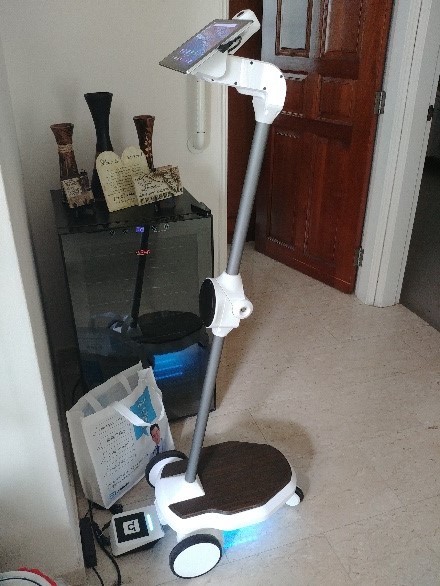 In midst of the current pandemic, social wellness has taken a big hit,
due to the many social restriction policies and social distancing campaigns
from many governments. With technology, smart phones, WIFI, 5Gs and many other
modern services, the word ‘social distancing’ has been a terrible choice of the
message given to the masses. Physical distancing and social integration should
have been the focus.
In midst of the current pandemic, social wellness has taken a big hit,
due to the many social restriction policies and social distancing campaigns
from many governments. With technology, smart phones, WIFI, 5Gs and many other
modern services, the word ‘social distancing’ has been a terrible choice of the
message given to the masses. Physical distancing and social integration should
have been the focus.
Caregivers should as far as possible, maintain good social interaction through technology use, from the everyday phone calls to tele-presence robotics. ZOOM meetings has replaced many traditional company meetings, hence, Tele-gatherings should be made more available and get caregivers more involved in such tele-support groups.
Social wellness should be maintained, if not enhanced for all the caregivers during the course of this current pandemic.
The next wellness will be emotional wellness, which can be very fragile in the midst of this pandemic. There are many restrictions and caregivers are often very afraid of any quarantine orders, which will fracture the already difficult care system in place for their loved ones.
There are definitely many ways to reduce to the stress and anxiety for caregivers. Seeing a wellness coach or attending yoga sessions will be great, if time can be afforded. However, most of the time, caregivers are too busy with day-to-day requirements and the caring work that no much time is given to personal wellness practices.
Hence, new solution such as digital
apps like InMIND will be interesting to patch the gap up on supporting
caregivers in maintaining their wellness. InMIND can track the stress level of
the caregiver just by downloading an app from the smart phone. After tracking
the level of stress, using 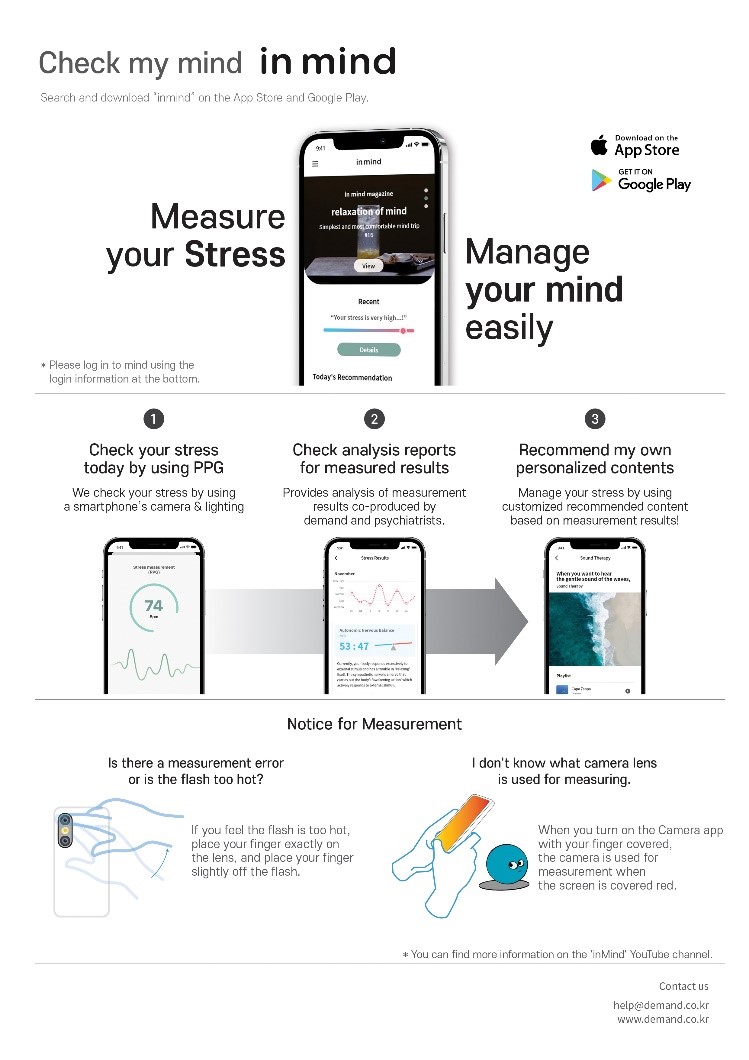 A.I. algorithm, it will recommend an in-app management plan for the
caregiver to follow. In this way, caregiver can be reminded to do wellness
practices daily and as and when needed. It is a digital “band aid” for stress.
A.I. algorithm, it will recommend an in-app management plan for the
caregiver to follow. In this way, caregiver can be reminded to do wellness
practices daily and as and when needed. It is a digital “band aid” for stress.
Caregiver Welfare Association will be trialing such cutting-edge solution this year as well for her members.
Taking time daily to do some wellness practices not only benefit the caregivers, it will also benefit the care recipients as well. In fact, both caregiver and care recipients can be doing such wellness practices daily to maintain mental well-being in these uncertain times.
In Summary, care givers need to keep their own welfare and mental wellness in check first, being they can give proper good care to their loved ones. Without a strong emphasis of personal wellness, it will be difficult to enjoy the journey of caregiving to our very most loved ones.
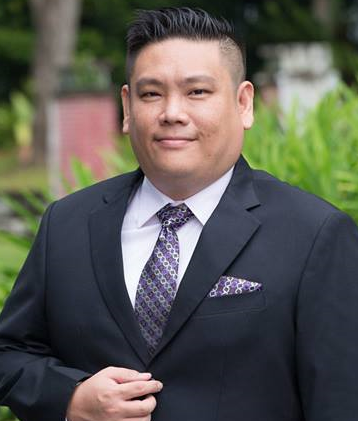
Dr Tan Jit Seng
Board Member (Co-opted)
Caregiving Welfare Association
Founder and Director for Lotus Eldercare Health Services.
_____________________________________________________________________________________________________________
Letting Go


Dr Daniel Tan
Board Member and
Editorial Sub-Committee: Editor-in-Chief
Caregiving Welfare Association
_____________________________________________________________________________________________________________
CWA Caregivers' Week 2021 - 'Finding Resilience in Caregiving'
.gif)

5 Sleep Mistakes You Don’t Know You’re Making and How to Fix Them!


Behavioural Strategies To Manage Pain
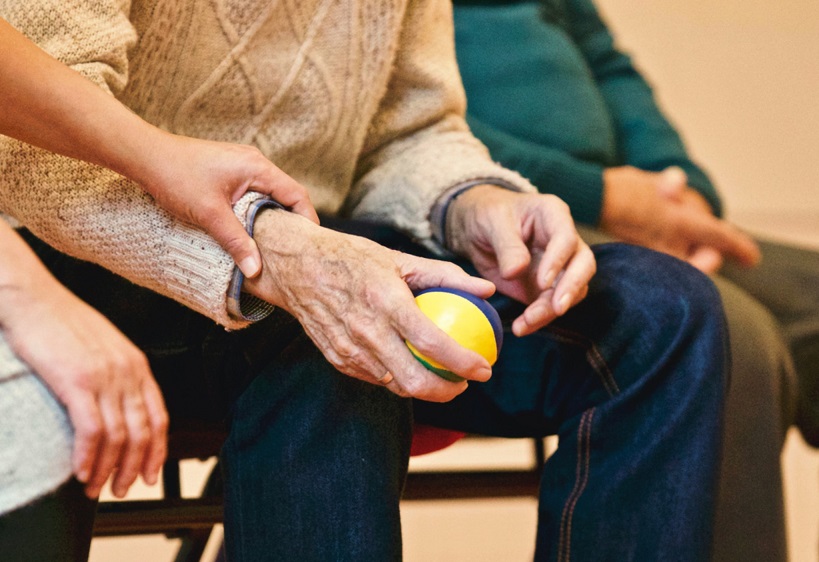 We may experience aches and pain in our body from time to time when we overwork or overtax ourselves. We may also experience pain due to an injury or a medical condition. And as caregivers we may also experience pain when we overstrain ourselves while helping our loved ones.
We may experience aches and pain in our body from time to time when we overwork or overtax ourselves. We may also experience pain due to an injury or a medical condition. And as caregivers we may also experience pain when we overstrain ourselves while helping our loved ones.
5 Vegetables to Avoid for Better Sleep in TCM
 Sleep is an inherent part of healthy living but an activity that is much deprived for many in society today. Getting into sleep and staying asleep seems to be almost unachievable by many people as they struggle to even get through the night in peace. This is especially so for caregivers who may have to break their sleep to serve the person they are caring for during the wee hours of the night.
Sleep is an inherent part of healthy living but an activity that is much deprived for many in society today. Getting into sleep and staying asleep seems to be almost unachievable by many people as they struggle to even get through the night in peace. This is especially so for caregivers who may have to break their sleep to serve the person they are caring for during the wee hours of the night. 
Nutrition and Immunity
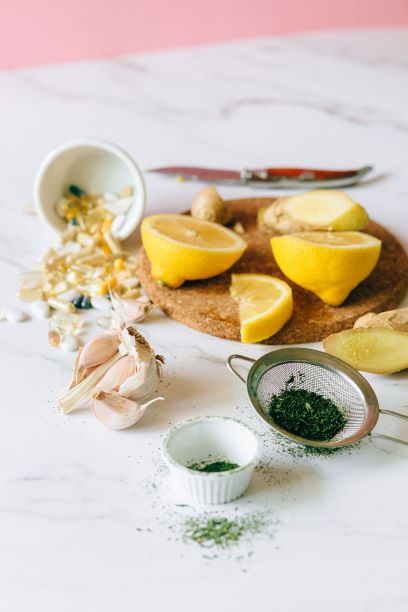 Adequate nutrients and water are vital for the functioning of all your organs, and it is a huge part of keeping your immune system functioning at an optimal level. Think of your immune system as your “personal bodyguards”, protecting you against infections and other harmful elements.
Adequate nutrients and water are vital for the functioning of all your organs, and it is a huge part of keeping your immune system functioning at an optimal level. Think of your immune system as your “personal bodyguards”, protecting you against infections and other harmful elements. 
Physiotherapy Management of Osteoporosis
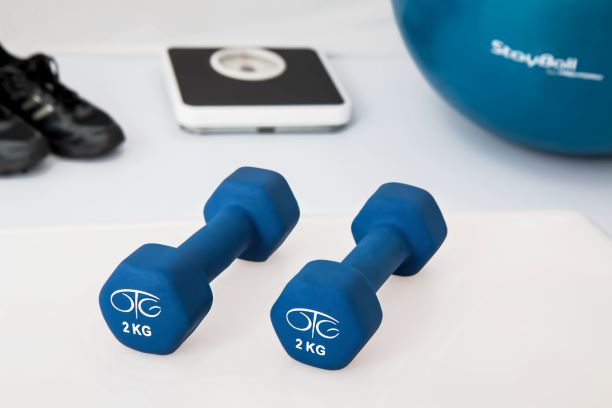

CWA 17th Anniversary - 'OF CHANGE & HOPE'
.gif)

WHY SHOULD WE LOVE OUR SLEEP?


____________________________________________________________________________________________________________
Music Listening for Health and Well-Being


Mr Jonathan Tang
Music Therapist - Board
Certified MA, MT-BC
Extraordinary People Limited
____________________________________________________________________________________________________________
Caregiver's Gift of Love
